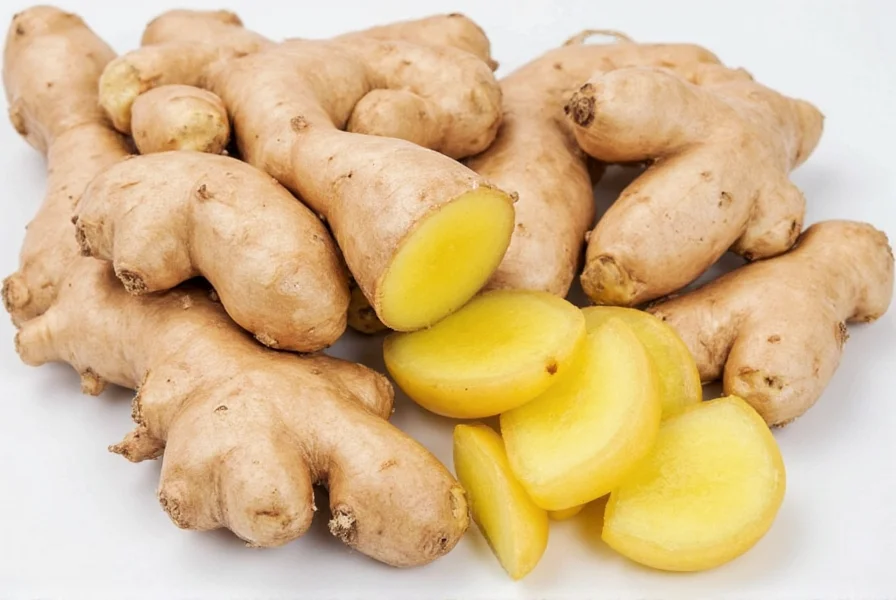Ginger root isn't just a kitchen staple—it's a flavor powerhouse with centuries of culinary and wellness applications. This knobby rhizome packs a spicy punch that can transform ordinary dishes while offering potential digestive and anti-inflammatory benefits. Understanding how to properly handle and incorporate fresh ginger makes all the difference between a harmonious flavor experience and an overwhelming bite.
Preparing Ginger Root for Consumption
Before you can enjoy ginger's zesty flavor, proper preparation is essential. The outer skin of mature ginger becomes tough and fibrous, making peeling necessary for most applications. Contrary to popular belief, you don't need a vegetable peeler—using the edge of a spoon to scrape off the skin preserves more of the flavorful flesh beneath while minimizing waste.

Popular Methods for Eating Ginger Root
| Method | Preparation | Best For | Recommended Amount |
|---|---|---|---|
| Raw consumption | Thin slices or small grated portions | Nausea relief, quick flavor boost | 1/4-1/2 inch piece |
| Ginger tea | Steep sliced or grated ginger in hot water | Digestion, cold relief, morning ritual | 1-2 inch piece per cup |
| Cooking | Sautéed, roasted, or added to sauces | Asian cuisine, stir-fries, marinades | 1-2 tablespoons grated |
| Pickled ginger | Thinly sliced in vinegar solution | Sushi accompaniment, palate cleanser | 1-2 tablespoons |
Raw Ginger Consumption Tips
Eating ginger root raw delivers the most potent flavor and potential health benefits, but requires careful portion control. Start with small amounts—about a quarter-inch slice—to assess your tolerance. The compound gingerol gives raw ginger its characteristic heat and potential digestive benefits, but can cause heartburn or stomach upset in sensitive individuals when consumed in large quantities.
For those wondering can you eat raw ginger root safely, the answer is yes for most people, but moderation is key. The recommended daily amount of fresh ginger generally falls between 1-3 grams (roughly 1/4 to 3/4 of a thumb-sized piece). Exceeding 4 grams daily may lead to digestive discomfort for some individuals.
Culinary Applications of Fresh Ginger
When incorporating ginger into cooking, timing affects both flavor and potency. Add grated ginger early in the cooking process for a mellow, integrated flavor, or stir it in during the final minutes for a brighter, more pronounced zing. For how to prepare fresh ginger root for cooking, grate it using a microplane for the most even distribution in sauces and marinades.
Asian cuisine often features ginger in combination with garlic and scallions as a flavor base. Try adding freshly grated ginger to:
- Stir-fries during the last 2-3 minutes of cooking
- Marinades for fish or chicken (1 tablespoon per cup of marinade)
- Smoothies for digestive benefits (start with 1/2 teaspoon grated)
- Homemade salad dressings for a flavor boost
Ginger Tea Preparation
Creating the perfect ginger tea requires attention to detail. Use a vegetable peeler or spoon to remove the thin outer skin, then slice the ginger into thin coins or mince it finely. For a standard cup, use about one inch of fresh ginger. Bring water to a rolling boil, add the ginger, then reduce heat and simmer for 10-15 minutes. Longer simmering extracts more gingerol but increases bitterness.

This preparation method for different methods to eat ginger root for nausea creates a soothing beverage that many find effective for morning sickness, motion sickness, or post-meal digestion. Add a squeeze of lemon and a touch of honey to balance the intense flavor.
Safety Considerations and Daily Limits
While ginger offers potential health benefits, certain populations should exercise caution. Pregnant women should consult their healthcare provider before consuming large amounts, as ginger may interact with certain medications including blood thinners and diabetes medications.
The question of how much ginger root should I eat daily depends on individual tolerance and health status. Most research suggests that 1-3 grams of fresh ginger per day represents a safe upper limit for adults. Children under 2 should avoid medicinal amounts of ginger, though small culinary amounts in food are generally considered safe.
Storage Techniques for Maximum Freshness
Proper storage extends ginger's shelf life and maintains its pungency. Store unpeeled ginger root in a resealable plastic bag with a paper towel in the vegetable crisper drawer of your refrigerator. This method keeps ginger fresh for 2-3 weeks. For longer storage, freeze whole or sliced ginger in an airtight container—frozen ginger can be grated directly without thawing.
FAQ: Frequently Asked Questions About Eating Ginger Root
Can you eat the skin of ginger root?
While technically edible, the skin of mature ginger root is tough and fibrous. Young ginger has thinner skin that's more palatable, but most culinary applications benefit from peeled ginger for better texture and flavor integration. Using a spoon to peel preserves more of the flavorful flesh compared to traditional peelers.
What's the best way to consume ginger for digestive benefits?
For digestive support, freshly grated ginger in warm water (as tea) consumed 20-30 minutes before meals shows the most consistent benefits. Start with 1/2 inch of ginger per cup of water, simmered for 10 minutes. Some people find chewing a small (1/4 inch) piece of raw ginger before meals helps with digestion, but this method may be too intense for sensitive stomachs.
How do I prevent ginger from burning when cooking?
Ginger burns easily due to its sugar content. To prevent burning, add it to hot oil for just 30-60 seconds before adding liquid ingredients or other vegetables. When sautéing, use medium heat rather than high heat, and stir constantly. For stir-fries, add ginger after aromatics like garlic have released their fragrance but before adding proteins.
Can I eat ginger root if I have acid reflux?
Individual responses vary, but many people with acid reflux find ginger aggravates symptoms due to its stimulating effect on digestion. If you have GERD or frequent heartburn, start with very small amounts (1/8 inch piece) and monitor your body's response. Some find relief from ginger tea while others experience worsened symptoms—listen to your body and adjust accordingly.
How can I incorporate ginger into my daily diet without overwhelming flavor?
For subtle ginger integration, try these approaches: add a thin slice to your water bottle, grate a small amount (1/8 teaspoon) into morning smoothies, include in salad dressings, or add to oatmeal with cinnamon. Freshly grated ginger in small quantities blends well with citrus flavors—try adding to lemon water or orange juice for a gentle introduction to how to incorporate ginger root into daily diet.










 浙公网安备
33010002000092号
浙公网安备
33010002000092号 浙B2-20120091-4
浙B2-20120091-4